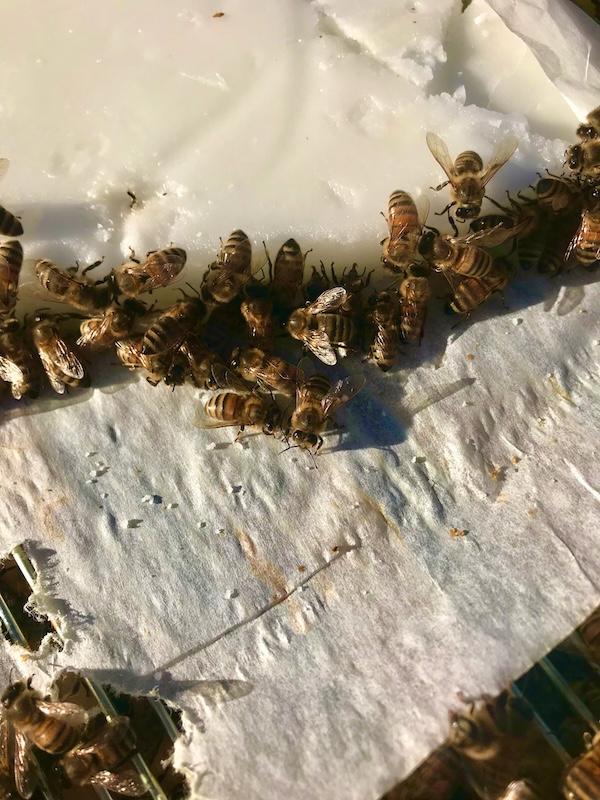
Surprise! 1st Winter & 2nd Fall Keeps Beekeepers on their Toes
Colorado likes to trick us with a 1st fall followed by a 1st winter, then a 2nd fall, and maybe a false spring. These weather changes can be hard on bees ready to binge on honey and chill through the real spring. All this can add tasks to the Front Range beekeeper’s to-do list.
Here is a list of tasks to consider during November and December on the Front Range:
- Monitor Hive Weight: Check the weight of your hives to estimate honey stores. If they are light on honey, consider providing supplemental feeding to ensure the bees have enough food to survive the winter.
- Insulate Hives: In Colorado’s colder climate, insulating your hives can help retain heat. Consider wrapping hives with insulation material or using insulated hive covers.
- Ventilation: Ensure adequate ventilation in your hives to prevent moisture buildup, which can lead to mold and health issues for the bees. Use upper entrances or hive ventilation boards if necessary.
- Reduce Hive Entrance: Reduce hive entrance size to prevent drafts and heat loss. Bees will have an easier time maintaining the temperature in the hive.
- Varroa Mite Treatment: If you didn’t treat for varroa mites in the late summer or fall, consider a winter treatment to reduce mite populations. Mites can be particularly harmful during the winter when bee populations are smaller.
- Check for Pests and Diseases: Inspect your hives for signs of diseases like Nosema and foulbrood and pests like hive beetles. If you notice any issues, take appropriate action, including medication or hive management.
- Remove Dead Bees: Periodically check for and remove dead bees from the bottom board or entrance area. Dead bees can block ventilation and harbor diseases.
- Protect from Wind: Position hives in a location that provides some protection from strong winter winds. Windbreaks or hive windshields can also be helpful.
- Winterize Equipment: Store unused equipment like supers and frames in a dry, protected area to prevent damage and deterioration during the winter months.
- Keep Records: Maintain detailed records of hive conditions, treatments, and any observations during the winter. This information can be valuable for making decisions in the spring.
- Plan for Spring: Use this downtime to plan for the spring. Consider ordering new bees or queens if needed, and list tasks you’ll need to tackle when the weather warms up.
- Attend Beekeeping Workshops: Take advantage of any workshops or classes offered in your area during the winter months to continue learning and improving your beekeeping skills.
Remember that beekeeping practices can vary depending on the specific conditions in your area, so it’s a good idea to talk with High Land Beekeeping Club members for region-specific advice and guidance. Beekeeping is a year-round commitment, and these winter tasks are essential for ensuring strong, healthy hives in the spring and beyond.
